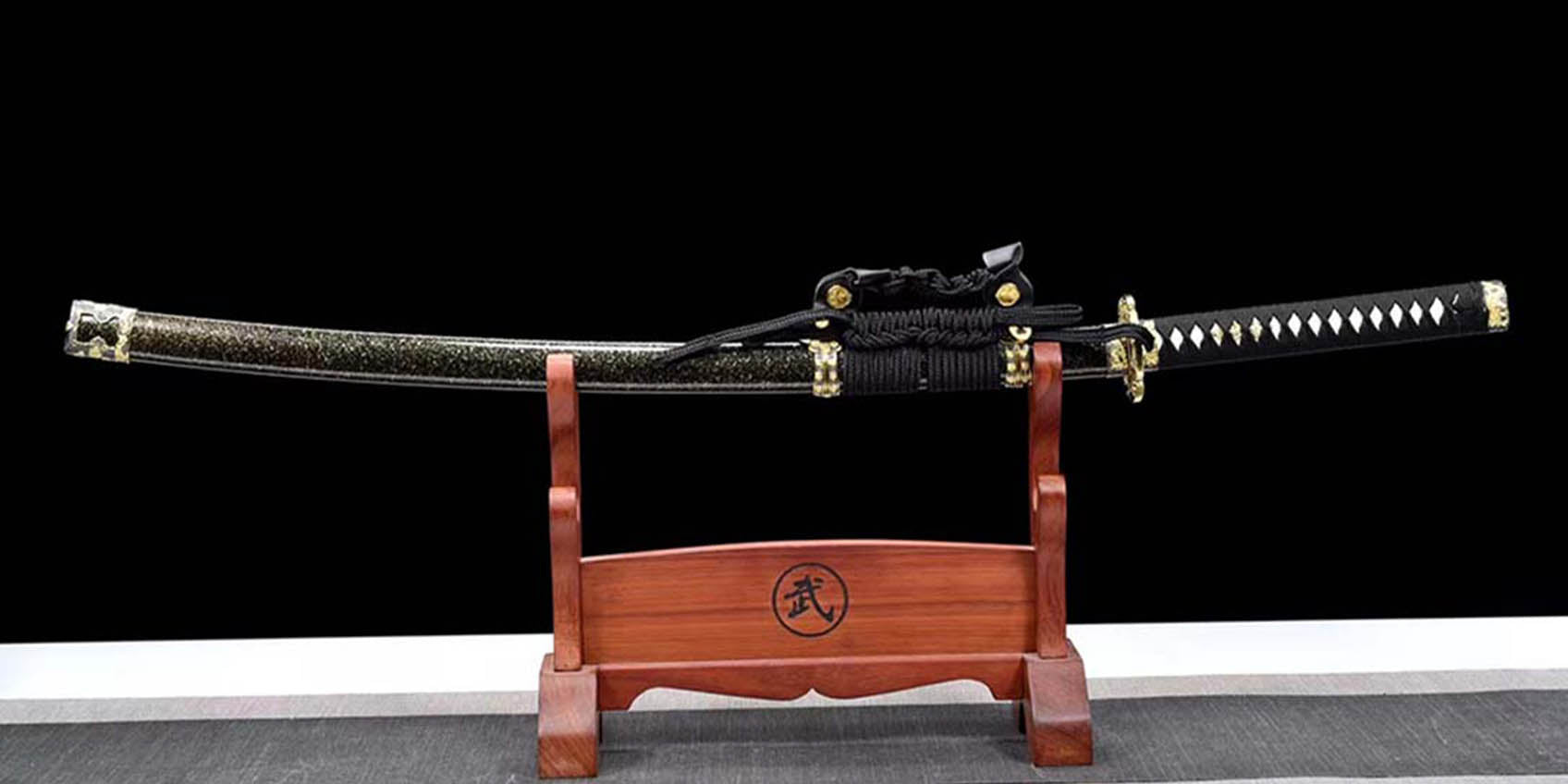Custom Sword: Sageo Basics and Techniques

Crafting the Samurai Sword:
Sageo (Knife Cord): Comprehensive Overview of Construction, History, Types, and Tying Methods
Construction and Materials:
Sageo, an integral part of traditional Japanese sword accessories, is typically crafted from silk or cotton, with lengths ranging from approximately 180 to 240 centimeters. Depending on the specific sword and ceremonial attire, flat-woven leather cords or straps may also be utilized.

Forms:
The design of sageo varies according to the type of sword ensemble. For instance, the tachi utilizes a pouch-shaped leather cord treated with smoke for its aesthetics, whereas shorter blades may feature divided strands to enhance decorative appeal.
History of Sageo:
Since ancient times, sageo has been an essential component of sword attire, evolving alongside changing eras in terms of types and tying methods.
Types and Decorative Styles:
Various weaving techniques characterize sageo, such as the Kikkou-gumi (turtle shell pattern), Ryuukou-gumi (dragon scale pattern), Tou-gumi (Tang pattern), Kourai-gumi (Korean pattern), Shige-gumi (dense weave), Kai-no-kuchi-gumi (shell-like knot), Sasanami-gumi (bamboo leaf pattern), and Une-gumi (ridge pattern), each reflecting distinct cultural and aesthetic preferences.

Decorative and Functional Uses:
Beyond securing the katana scabbard, sageo plays a crucial role in ornamentation. The selection of weaving styles and materials mirrors the wearer's identity and aesthetic sensibilities.
Tying Methods:
Variety of Tying Techniques:
- Tachimaki (sword knot): Specifically designed for tachi swords, ensuring both functionality and aesthetics.

- Daimyo-musubi / Ronin-musubi (lord's knot / ronin's knot): Emphasizing visual appeal, suitable for highly decorative swords.

- Seishiki-musubi (formal knot): Also known as butterfly knot, a formal tying method from the Edo period.

- Noshi-musubi (ribbon knot): The simplest and widely adopted tying method.

- Myouga-musubi (ginger knot): Prevents the sageo's end from fraying, resembling the shape of a ginger plant.

- Makimusu (coiled knot): Secures the sageo in a coil shape around the scabbard.

Modern Culture and Personalization:
The evolution of modern culture and heightened demands for personalization have led to a diversification of sageo designs. Contemporary sageo associated with hand forged swords now showcase intricate weaving techniques, decorative patterns, and utilize a wide range of materials including silk, cotton, flat-woven leather, zinc alloy, iron, copper, gold-plating, and silver-plating.
This evolution caters to dual needs for aesthetic appeal and functionality among contemporary enthusiasts and collectors. Whether one favors traditional elegance or modern styles, customization options allow each collector to customize their sageo, transforming it into a unique piece of art. Personalized sageo services enrich the world of cool katana collecting, showcasing individual tastes and aesthetic preferences.
Conclusion:
Sageo, as an indispensable element of samurai sword attire, serves not only to secure the scabbard and belt but also embodies profound historical and cultural significance. From its ancient material choices to intricate weaving techniques and decorative tying methods, sageo exemplifies Japan's meticulous attention to detail and aesthetics in sword culture.
In samurai tradition, sageo transcends mere functionality to symbolize the wearer's identity and personal taste. Different weaving styles and tying methods reflect distinct cultural periods and regions, each carrying unique cultural meanings.
Our shop offers a wide range of customized services

At some events, fans demonstrate their swordsmanship skills, paying tribute to anime's legendary battles. Conventions even hold swordsmanship competitions, letting enthusiasts showcase their passion and creativity with these iconic weapons. Certain anime weapons hold special significance for fans, influencing anime swordsmanship and sparking interest in related merchandise. Celebrations at various anime events further boost their popularity. These weapons symbolize strength and courage, leaving a lasting mark on the anime world.

